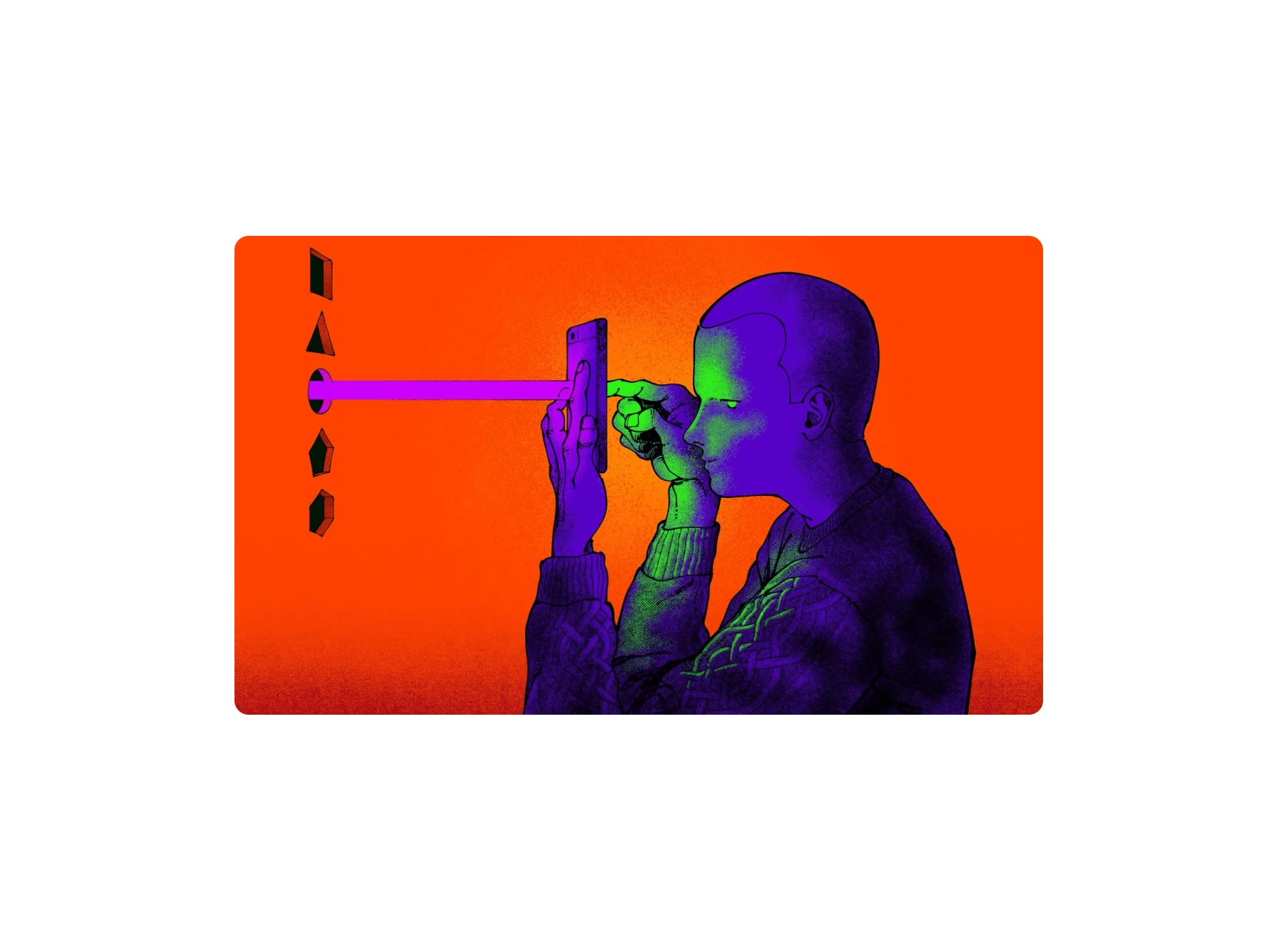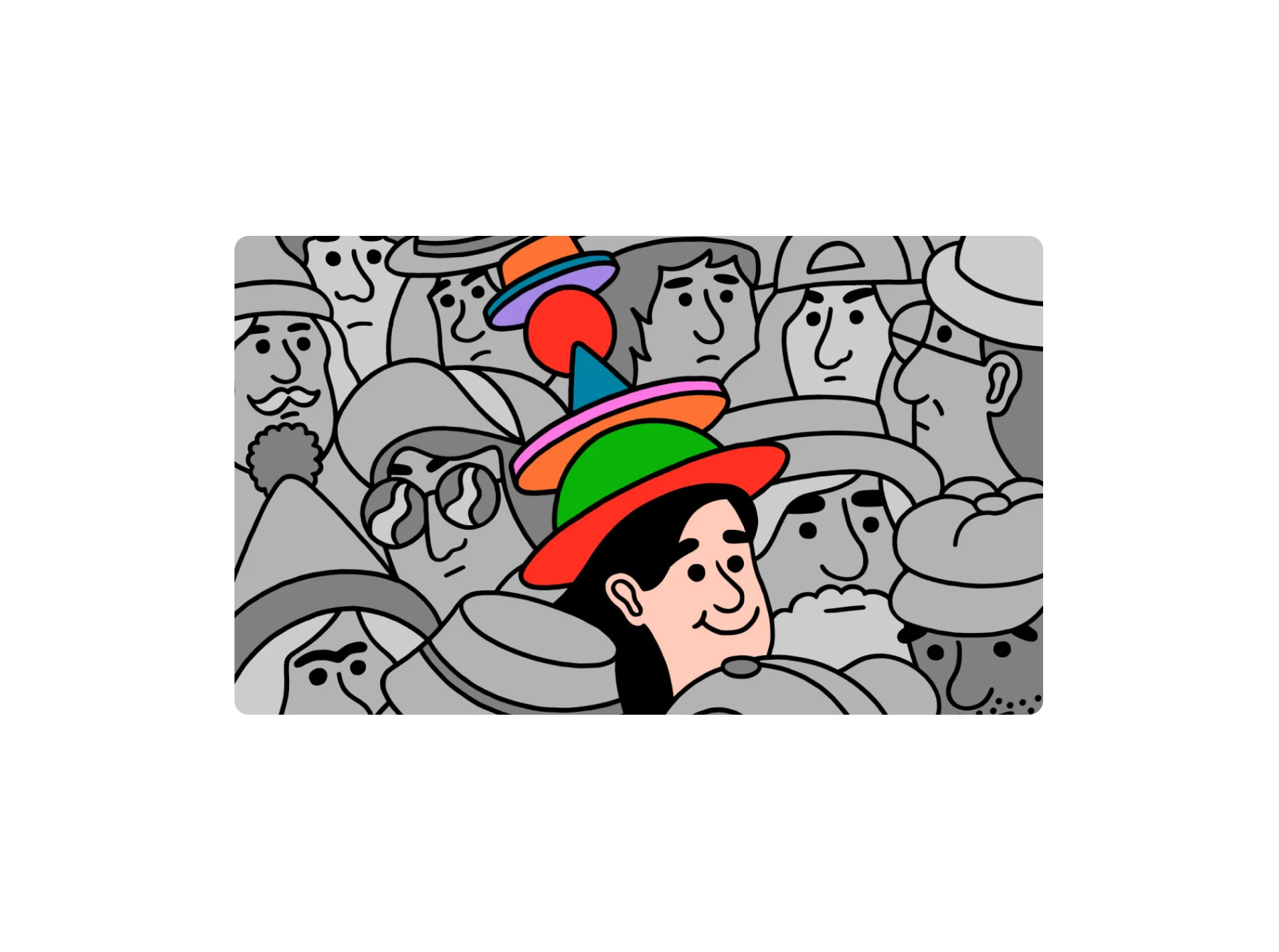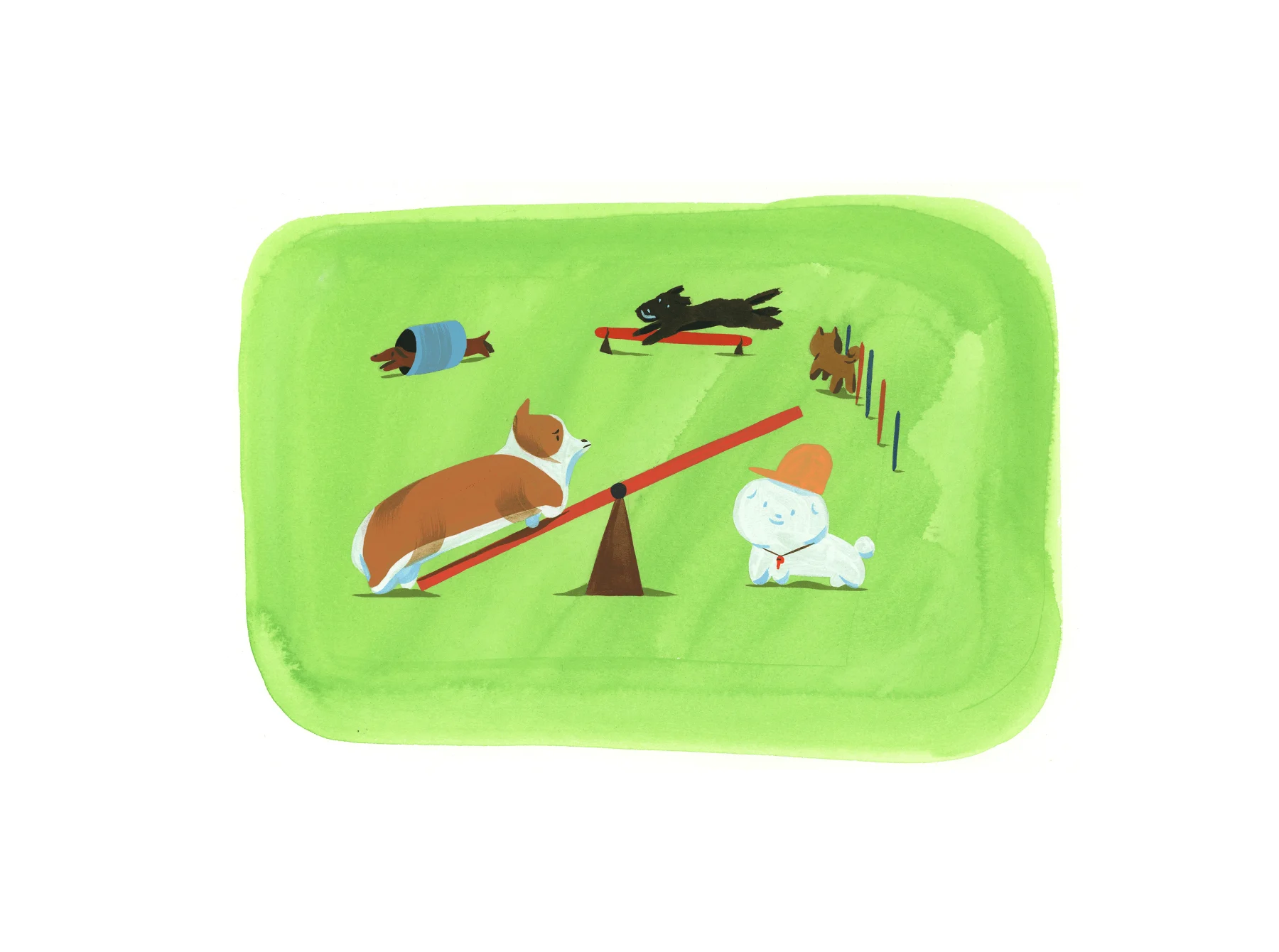


In our practical advice series Stuff They Don't Tell You, James Cartwright offers tips to navigate all those questions that sometimes go unanswered in the creative industry. In partnership with Mailchimp, this specially-commissioned four-part series focuses on what small businesses can do to take their company to the next level.
Illustrations by Sergio Membrillas.
Chances are we’ve all come up with an idea for a small business. Sometimes I can conceive of at least six possible small businesses before breakfast. But in order to make a small business successful you’ll need more than just a good idea; you’ll need clients, customers, a captive audience, and you’ll need to know who they are and what makes them tick. If you don’t, all the choices you make about your business will just be shots in the dark.
“Fully understanding your audience is critical no matter how large your team is or what stage of growth you’re in,” says Mailchimp’s VP of product marketing, Darcy Kurtz. “It’s unrealistic to think you’ll know exactly who your customers are from day one, but a lot of small businesses tell us they wish they’d started building their audiences earlier.”
The trouble is, you won’t know who your audience is and what it wants until you’re already up and running. In lieu of concrete information, it’s best to design for a specific audience in mind, even if they’re borderline fictional to begin with. When Martha Dillon and Matthew Lewis set up climate change magazine, It’s Freezing in L.A., they’d identified a space for reframing the relationship between science and environmental media to create a new kind of platform.

“We had a number of different audiences in mind from the beginning,” say Martha and Matthew. “We aimed at science students through the types of information in the magazine and creatives through our design, illustration and bold use of graphics. As the climate crisis is an urgent subject that will affect everyone, the highest importance is placed on the accessibility of the content. The hope was that by doing this we could also widen our audience to anyone who decided to have a read.”
Once you know a little bit more about your audience, it’s easier to make vital decisions about the direction of your business. Glimpse is a London-based collective that produces grassroots campaigns for purposeful brands. It has a core team of six and a vast list of volunteer members who come together to make each project happen. “Our members are mostly people in the creative industry who want to use their skills for good,” says founder James Turner.
“We have lots of graphic designers, copywriters, and art directors as well as filmmakers, painters and potters. Basically it’s anyone who believes that creativity has huge power to shape our world and feels disappointed that it’s mostly being used to sell electric toothbrushes and bluetooth speakers.” Knowing this about its members enables Glimpse to better choose the kinds of projects it should be working on.
You need to understand individual customers and their needs.
As your business develops, your audience will inevitably develop too, growing and incorporating different kinds of people with different needs to be met. To address this, checking in regularly with your audience can help frame what you do to ensure you’re communicating effectively with an increasingly diverse bunch of people.
“Without wanting to sound too spacey, companies evolve and so it’s right and proper that our messaging should evolve with us,” says Ailsa Cane of creative agency Human After All. The agency has recently spent months reappraising the way it communicates its values to its various audiences, which has meant a whole lot of audience research.
“Our principles haven’t really changed since day one, we’ve just got better at communicating them and now have more evidence to back them up. We’re very lucky inasmuch as we are more or less where we wanted to be by year six, and we always knew that if we could pull that off, the time would come where we would need to talk more confidently and holistically about what we offer.”
Of course there are no hard and fast rules for getting to know your audience, and the methods of doing so will vary from business to business. But taking the following pieces of friendly advice should steer you in the right direction.

Start with an audience in mind
“The first question to ask yourself is, ‘What problem am I trying to solve for customers?’” says Darcy, “and then, hypothesize who those customers might be. Think about how they behave, what their preferences are and where they tend to look for information for solutions like yours. From there, the goal is to validate and refine that hypothesis until you get a clearer picture on your product or market.”
Test your assumptions
It’s not enough to just assume your hypothesis was correct. You need to get out there and prove that it was, which means getting in touch with your audience directly. “We’re very lucky that a lot of our contacts allow us to take up their time with pretty in-depth interviews,” says Ailsa. “Hopefully that’s a process that is useful for both parties, as it also gives our clients a chance to give us thoughts or feedback on what they want to see from us.”

Don’t be afraid to get intimate
Starting a new business is like jumping off a comfortable cruise ship and into a leaky dinghy.
Knowing your audience at a superficial level is one thing, but knowing them intimately will be of greater benefit when making the most crucial decisions. “Understanding your audience doesn't stop once you’ve refined your profile of an ideal target market,” says Darcy. “Now you need to go down a layer and start to understand individual customers and their needs so that you can deliver the most personalized and relevant marketing to them.”
Use every channel you’ve got
Every business utilizes different platforms and modes of communication, all of which can be used to gather information about an audience. “We always see who reads our magazine on social media,” say Martha and Matthew, “particularly Instagram and Twitter. We also get lots of emails from people about their work and projects, which is a good insight into the worlds we're reaching. These online conversations are actually the main way that we’ve come to understand who our readership are, and alongside events, these are probably the spaces that we interact with them the most, too.”
At Mailchimp, gathering digital information about customers is an everyday occurrence, but spending face-time with them is still vital. “We gather feedback by visiting customers in their environment,” says Darcy, “inviting them into our office so all employees feel that human connection, and collect feedback via our support channels and on social media. Our audience is small businesses, but they’re also people, which is why we strive to ensure the customer experience has a human feel to it. People want to connect with brands that have personality.”

Evolve for the customers you want to have
“To provide a good service you have to be useful to the people you already work with and those you want to work with,” says Ailsa. “For us, that meant codifying years of work into something that makes sense to as many people as possible, which isn’t an easy task.”
But stay true to your roots
Evolving your business to suit the changing needs of your clients is important, but it’s vital you don’t lose sight of what made you attractive to them in the first place. “This might sound counterintuitive, but I don’t expect to change how we communicate based on our recent member surveys,” says James. “Our members came to us for a reason, and we have a tone of voice which is positive, a bit mischievous, but grounded in compassion and a sense of shared humanity. As soon as you start adjusting all your communications to fit a perceived audience type, you’re not being true to yourself.
“Starting a new business is like jumping off a comfortable cruise ship and hauling yourself into a leaky dinghy. You’re constantly bailing out water and looking for possible islands to land on. People can feel that rawness, that urgency, that excitement. We don’t want to lose that.”
WePresent and Mailchimp have partnered to support creatives in business. This series of Stuff They Don’t Tell You focuses on how creative companies and individuals can define their brand and scale up their business.





